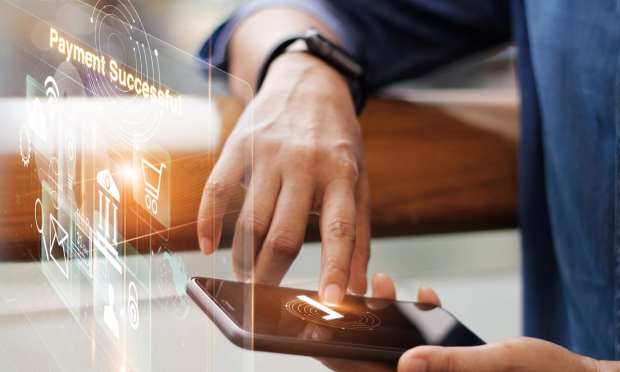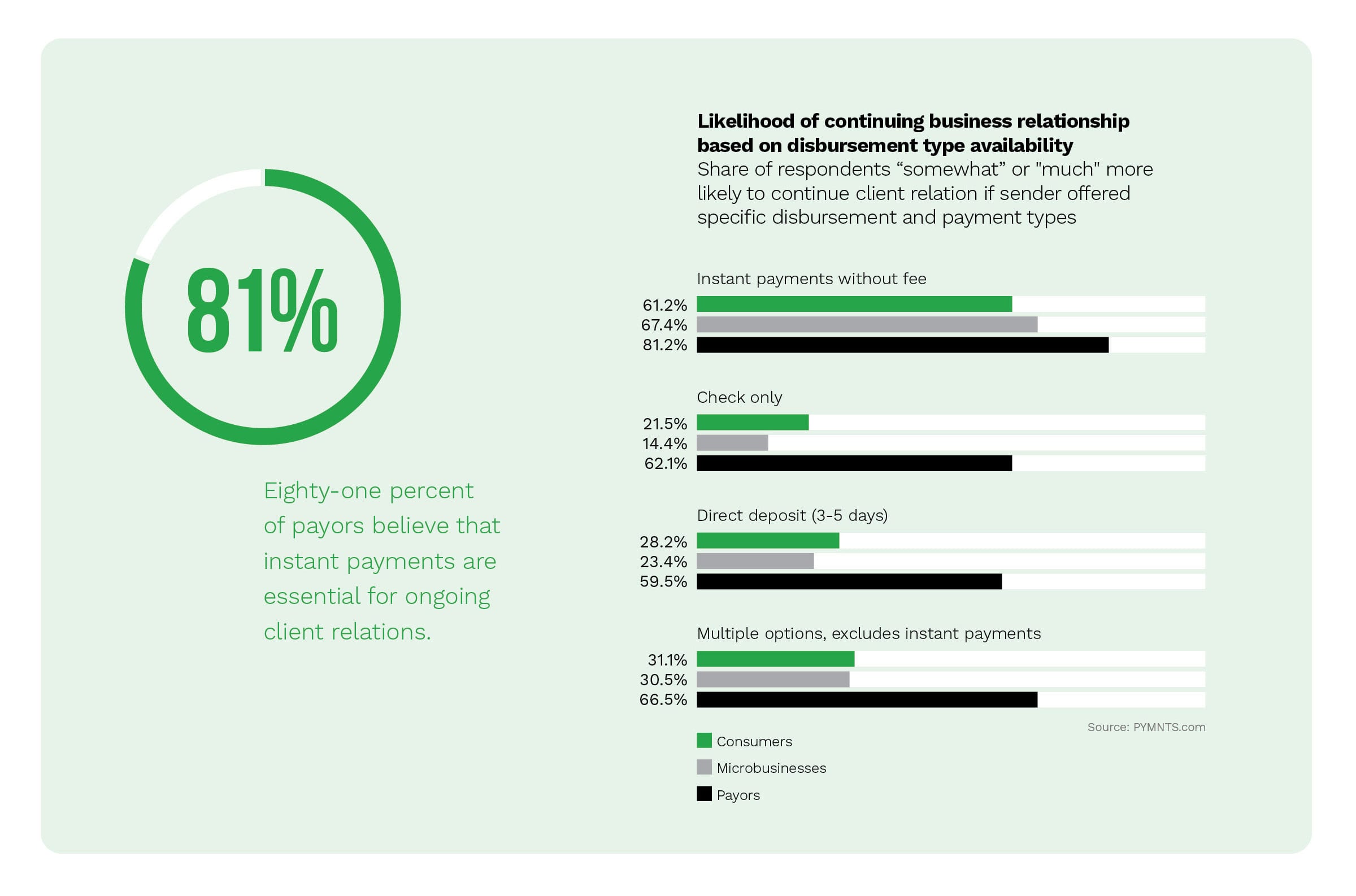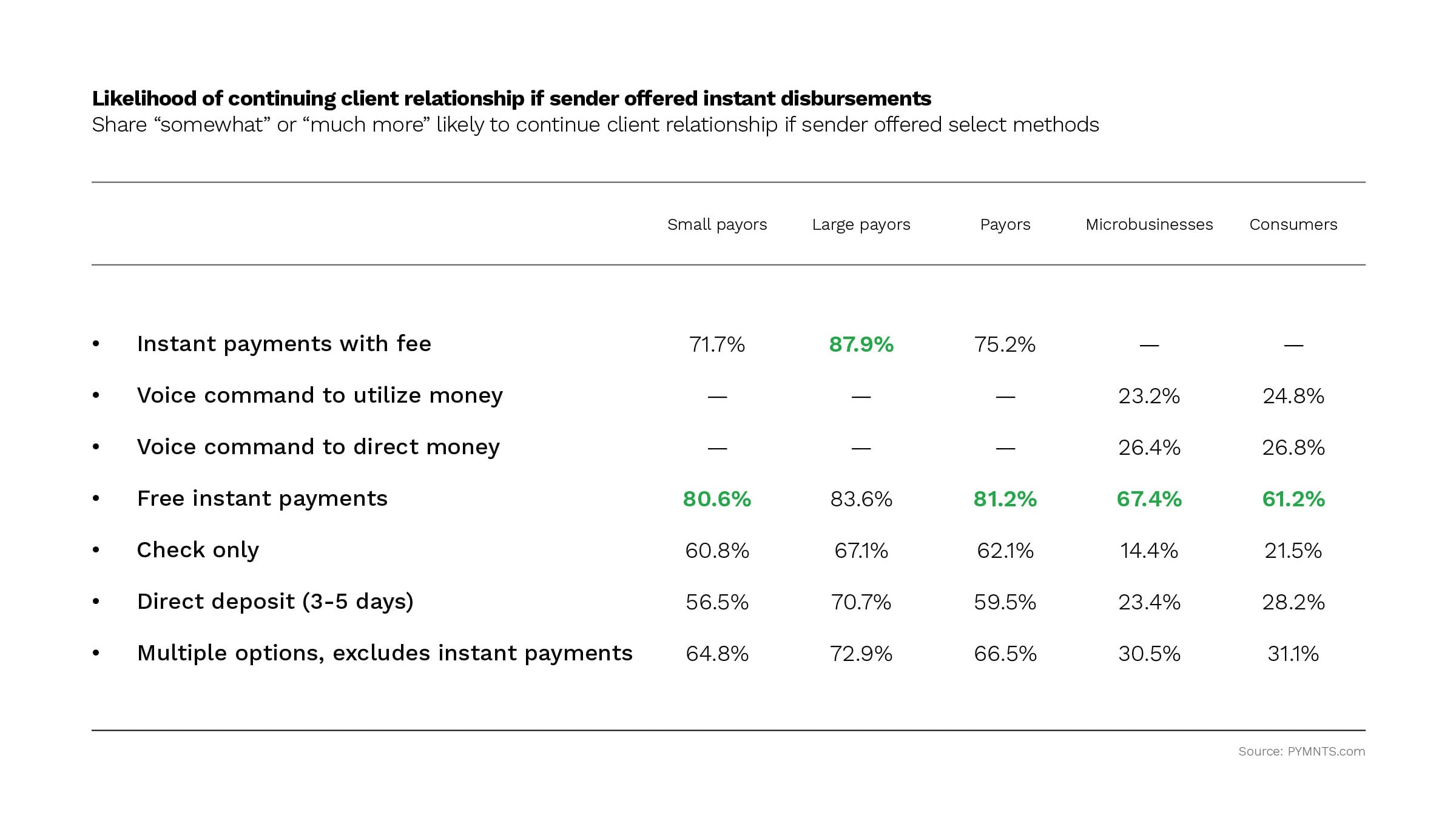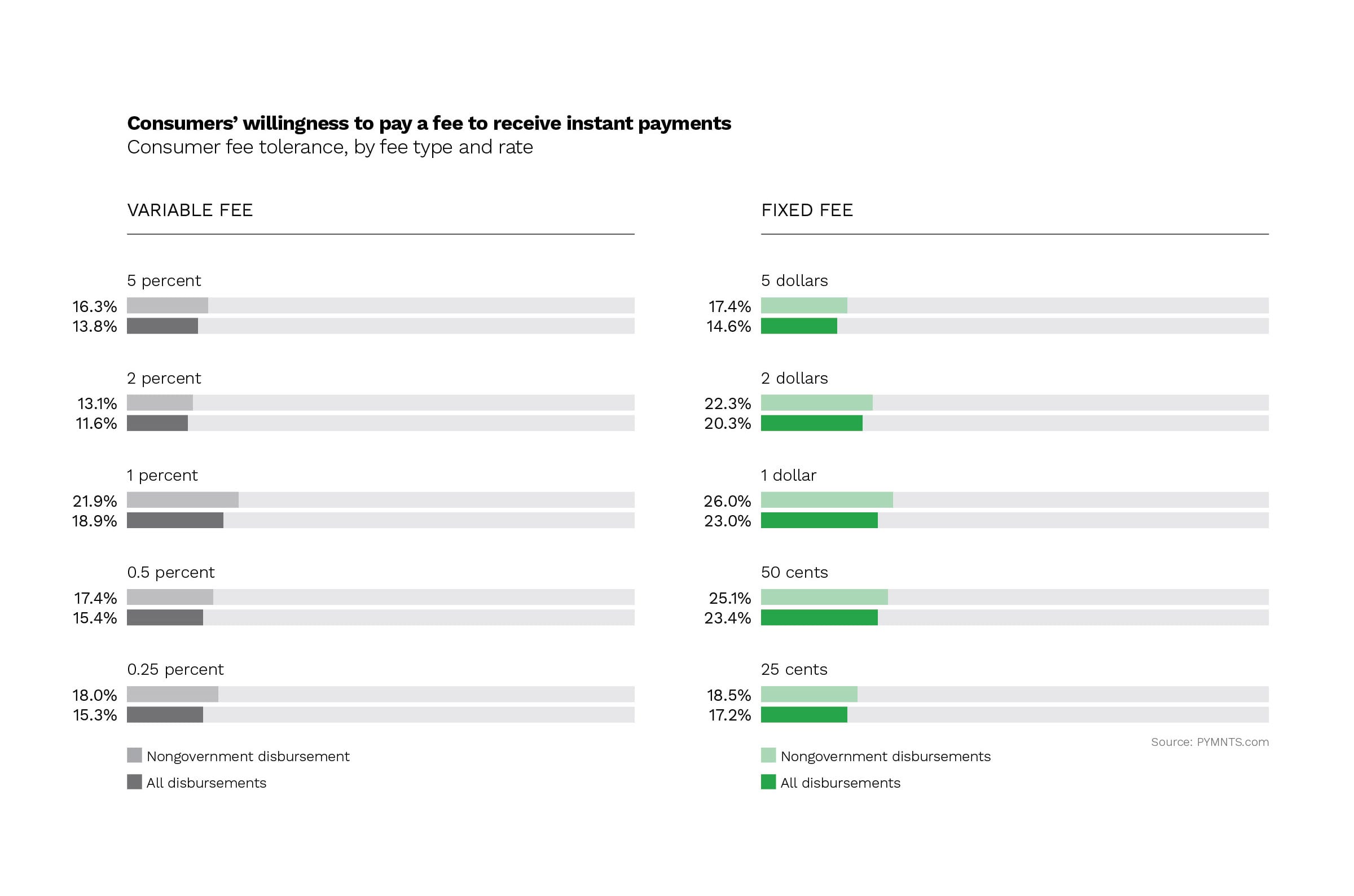Instant Payments Show Strength As An Engagement Builder

Throughout 2020, PYMNTS research found deeply-held sentiments among microbusinesses and consumers about transaction efficiency. We learned about the cash flow crisis and the existential threat it continues to pose to businesses even now.
With this in mind, PYMNTS January 2021 Disbursements Satisfaction Playbook, an Ingo Money collaboration, studies how consumers and businesses evaluate, access and interact with instant payment features in commercial and private settings. Containing insights from more than 5,000 consumer responses and 1,000 responses from businesses of all sizes, “the transformative role of instant disbursements in consumers’ experiences and long-term client loyalty” is proven out by the numbers in this Leveraging Instant Payment Access To Drive Engagement edition.
We won’t stop there — though we could — as the new Playbook states up front, “The importance of instant payments was reflected throughout our research, with fewer than one-third of consumer respondents stating that they were likely to continue relationships with businesses that were not capable of instant payments.”
Now, to the study findings. Instantly.

Amplifying Loyalty
Among findings that sing out in the latest study from this series is that consumers and financial institutions (FIs) each like instant payments — but for completely different reasons.
“More than 67 percent of microbusinesses and 61 percent of consumers in our survey reported that a free instant payment option would amplify their loyalty as clients,” per the January Disbursements Satisfaction Playbook, Leveraging Instant Payment Access To Drive Engagement.
Meanwhile, researchers found, “Payors (companies with over $1 million in revenue) and payment recipients measure the cost-to-reward value of instant payments with different criteria. Payor enthusiasm for instant disbursements may be driven by the payments’ efficiency and ease of use for clients, with 81 percent of payors believing that offering instant payments for free will increase the likelihood of a continued business relationship with payees.”
Whatever the rationale, it seems there’s no getting the instant genie back in the bottle.
Per the Playbook, “More than 60 percent of consumers and microbusinesses viewed the option of instant payments as critical to their ongoing business relationships with payors. Consumer and business demand for transaction modernizations — such as voice-enabled account management and digital wallet use — is growing as innovative customer experience tools become ubiquitous in the global marketplace.”

Instant Is Critical To Business Relationships
What’s been hinted at so far is the secret ingredient in all successful commerce today: customer experience. It stuns no one to discover that instant payments are considered a good experience. It’s reason to wonder, then, why instant payments aren’t everywhere.
“Our research indicates that instant disbursements are vastly underutilized as a customer experience feature. Seven out of 10 consumers — or 172 million Americans — received at least one disbursement in 2020, up from 62 percent in August 2019, yet only 6 percent of all disbursements consumers receive arrive via an instant disbursement service,” according to the Disbursements Satisfaction Playbook.
“Survey respondents reported that they were presented with a payment method choice in only half of the disbursements received,” per the Playbook. “More than 60 percent of consumers and microbusinesses viewed the option of instant payments as critical to their ongoing business relationships with payors. Consumer and business demand for transaction modernizations — such as voice-enabled account management and digital wallet use — is growing as innovative customer experience tools become ubiquitous in the global marketplace.”
And considering that “the largest shares of consumers are willing to pay fees of $1 or 50 cents per transaction to receive instant payments, while the largest shares of microbusinesses are willing to pay a fee of 50 cents,” as PYMNTS found, the paucity of instant can’t continue.
